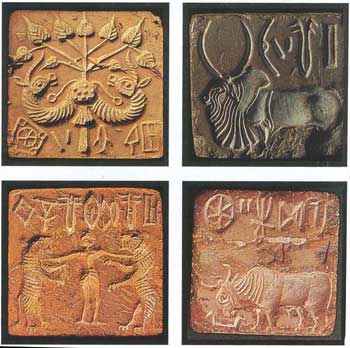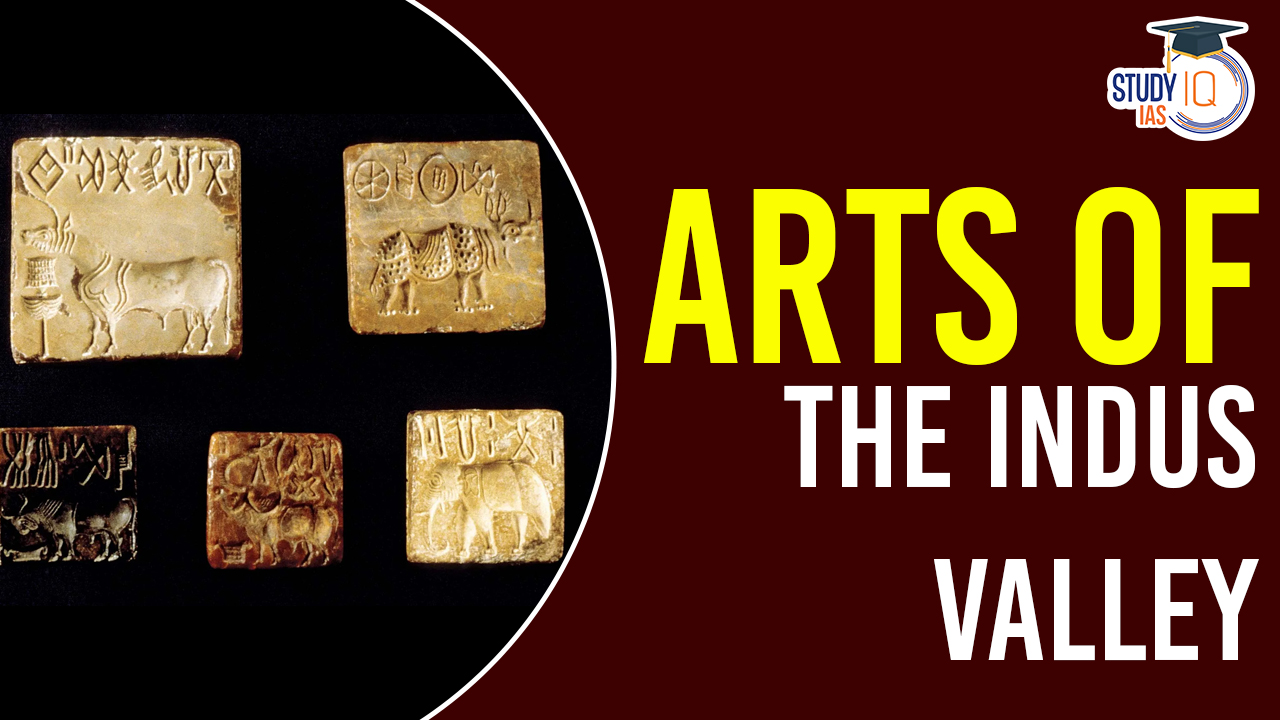Table of Contents
Arts of the Indus Valley
India’s history is significantly influenced by the Indus Valley Civilization. The Indus Valley civilization, one of the earliest civilizations in history, developed its arts during the course of the second millennium. Sculptures, seals, ceramics, gold jewellery, terracotta figurines, and other pieces of art have been discovered at numerous civilisation sites. The Arts of the Indus Valley Civilization provide a wealth of information on the way of living at that period.
Arts of Indus the Valley History
The Indus Valley civilization, one of the earliest civilizations in history, developed its arts throughout the second millennium. Many civilisation sites have yielded the discovery of sculptures, seals, ceramics, gold jewellery, terracotta figurines, and other works of art. The modelling of the figures was done with the utmost care, and their depictions of human and animal forms were incredibly lifelike.
Two important Indus Valley civilization sites can be found along the Indus River: Harappa and Mohenjo-Daro in the north and Mohenjo-Daro in the south. While Mohenjo-Daro and Harappa are in Pakistan, notable sites found in India include Ropar in Punjab, Rakhigarh, and Banwali in Haryana, Surkotada in Gujarat, and Dholavira in Gujarat. Stone, bronze, terracotta, clay, and other materials were frequently employed for creative creations.
Harappan Art and Architecture
The Indus Valley Civilization, also known as the Indus Civilization or the Harappan Civilization, was a Bronze Age civilization that lasted from 3300 to 1300 BCE and, in its last stages, from 2600 to 1900 BCE in northwestern South Asia. Along with ancient Egypt and Mesopotamia, the Harappan/Indus Valley Civilization was the most prevalent of the three early Near Eastern and South Asian civilizations.
Indus Valley/Harappan A sizable section of Pakistan, northeastern Afghanistan, and northwesterly India were home to civilisation sites. The civilization flourished in the alluvial plain of the Indus River, which flows the entire length of Pakistan, as well as along a network of perennial monsoon-fed rivers that once ran near to the Ghaggar-Hakra, a seasonal river in northwest India and eastern Pakistan.
Art of Indus Valley Civilization Features & Types
Stone Sculptures
In the handling of the 3D volume, stone sculptures from Indus valley locations can be observed. The two largest stone statues are:
In Mohenjo-Daro, a Bearded Man (Priest Man, Priest-King) was discovered. Main features of the sculptures are:
- Steatite figurine depicts a bearded man with a shawl covering the left shoulder and coming under the right arm, implying that the figure is a priest. A trefoil pattern may be seen on the shawl.
- The eyes are open yet slightly closed, as in meditative contemplation.
- Short beard, whiskers, and moustache, as well as an average-sized, well-formed nose. Once the hair is divided in the middle, a simple braided fillet is worn around the head.
- There is a general nod to Greek design in the statues, with a right-hand armlet and holes around the neck suggesting a necklace.

Male Torso
- It’s construction was done with red sandstone.
- Through socket apertures on the neck and shoulders, the head and arms are connected. Broken legs have occurred.
- The belly is a little bulging, and the shoulders are attractively browned.
- The item is one among the better-cut and-polished ones.

Bronze Casting
The Lost Wax process was used to create the bronze statues discovered in Harappa. This method is still in use in some areas of the nation today, demonstrating the persistence of traditions. This method was widely used across practically all of the sites.
Clay was applied to wax figures after they had been created. After allowing the clay to dry, the wax was melted on the figure using heat. There was a hole in the clay through which the wax was drained. The chosen metal was then poured into the hollow clay. The clay covering the desired metal figurine was taken off when the metal had cooled. This method was used to create both animal and human figures. Bronze sculpture examples include a dancing girl and a buffalo with an elevated head. few illustrations of bronze casting:
Dancing Girl
- It was created in Mohenjo-Daro and is one of the most well-known pieces of Indus Valley art. It features a girl with long hair bunned and bangles covering her left arm.
- Her left hand is clasped in a traditional Indian dance motion, and her right hand is on her hip. She is wearing a cowry shell necklace.

Terracotta
Terracotta figures in Gujarat and Kalibangan are more realistic. In terracotta, there are a few figures of bearded men with coiling hair who are standing straight with their knees slightly apart and their arms parallel to their sides. The repeated occurrence of this figure in the same position shows that he was a deity. A clay mask of a god with horns was also found.
Additionally, toys with wheels, whistles, rattles, birds, animals, game pieces, and discs were made of terracotta. The most significant clay figurines are Mother Goddess statues. One prominent illustration of a terracotta statue is:
Mother Goddess
- Mohenjo-Daro is where it was found.
- She is dressed in a grid and a loin robe, with jewellery hanging from her enormous breast, and these are primarily rudimentary standing sculptures.
- The mother goddess’s fan-shaped headgear, which has cup-like protrusions on either side, is its most striking aesthetic feature.
- The figure’s pellet eyes and beaked snout are incredibly basic (built in a crude manner).
- The mouth is indicated by a little opening.
Types of Seals in Indus valley Civilization
The excavations yielded thousands of seals, most of which were made of steatite, but also of agate, chert, copper, terracotta, and faience. These seals featured excellent depictions of creatures such unicorn bulls, rhinoceroses, tigers, elephants, bison, goats, and buffalo. Wealth creation was the main goal.
They were also worn by their owners as amulets, perhaps similar to how identity cards are used now. The size of a Harappan seal was 2 x 2 square inches. Each seal is inscribed with a pictographic script that is still not fully understood. Additionally, seals have been found in Gold and Ivory. Main example of seal is:
Pashupati Seal
- A tiger, an elephant, a rhinoceros, and a buffalo are pictured on the right side of the seal, while a cross-legged human figure and a buffalo are shown on the left.
- Two antelopes (deer) can be seen close to his feet, beneath the bench. The figure has three horns on its head.

Types of Pottery in Indus Valley Civilization
With a few exceptions, the majority of the Indus Valley’s pottery is created on a wheel. Plain pottery is far more common than painted ceramics. Red clay, with or without a fine red or grey slip, is the most popular material for plain pottery. The black painted ware has a fine red slip coating, and the geometric and animal images are painted there in glossy black paint. Main example of pottery is:
Painted Earthen Jar
It is made on Potter’s wheel, found at Mohenjo Daro.

Beads, Ornaments, and Cosmetics
Harappan men and women used a variety of jewellery to ornament themselves, including pieces made of bone, baked clay, precious metals, and gems. Both men and women wore white armlets, finger rings, fillets, and necklaces. In Mohenjo-Daro and Lothal, gold and semi-precious metal stone necklaces, copper bracelets and beads, gold earrings, and head ornaments have all been found.
In Harappa, a cemetery was found where the deceased were interred with jewellery. Both Lothal and Chanhu Daro have advanced bead manufacturing. Cementing two or more stones together resulted in the creation of certain beads. Animal figurines were also made and used as pinheads and beads, particularly monkeys and squirrels.

Spinning cotton and wool was a common activity practised by both the wealthy and the underprivileged. Different garments that resembled a dhoti and shawl were worn by men and women. Shawl covered the left shoulder and extended below the right arm. They were interested in fashion. Beards and various haircuts were both in style. They were familiar with face paint, lipstick, and collyrium (eyeliner), and cinnabar was employed as a cosmetic.


 Story of Meera Bai and Her Devotion For ...
Story of Meera Bai and Her Devotion For ...
 Desert Climate, Distribution, Climatic C...
Desert Climate, Distribution, Climatic C...
 Deserts of India Map, Features of Thar D...
Deserts of India Map, Features of Thar D...





















